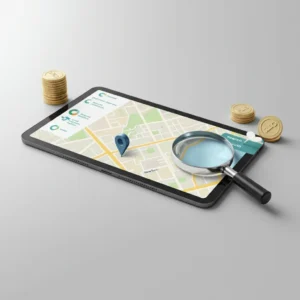Staying ahead of newsletter design trends is crucial for brands seeking to enhance email engagement and optimize conversion rates. As visual preferences evolve, incorporating the latest design trends, such as data-driven design and responsive design, can significantly impact how subscribers interact with your content, leading to improved customer retention and trust.
For 2025, newsletter design is set to prioritize personalization, mobile-friendly design, and visual storytelling. Personalization taps into audience data to tailor experiences, while mobile-friendly design ensures seamless viewing across devices. Visual storytelling uses engaging infographics to convey complex messages effectively and enhance visual hierarchy.
Top trends like bold typography, dark mode, and interactive elements further enhance newsletters’ appeal, making them more engaging and impactful. By integrating these trends and analyzing audience preferences through strategies like A/B testing and audience segmentation, brands can craft newsletters that resonate and convert, driving successful email marketing campaigns.
Why are Newsletter Design Trends Important?
Newsletter design trends are important because they help brands improve email engagement and conversion rates by aligning with current visual preferences and employing effective layout design.
Newsletter design trends influence customer retention by ensuring communications remain appealing and effective, incorporating trend adaptation and user-centered design.
Incorporating design trends into newsletters enhances user experience and builds audience trust, while also boosting branding and creating compelling content.
How do Newsletter Design Trends Impact Conversions?
Newsletter design trends impact conversions by influencing how readers engage with content through personalized and targeted messaging.
Effective newsletter design includes clear layouts, strategic call-to-action placement, appealing visuals, and the use of creative assets to encourage clicks and actions.
Trends like personalization, conversion optimization, and above-the-fold call-to-action buttons improve conversion rates by guiding user behavior.
Incorporating user feedback into design decisions aligns newsletters with audience preferences, enhancing engagement and conversions through feedback loops and performance metrics.
Newsletter Design Trends for 2025
Newsletter design trends for 2025 focus on personalization, mobile optimization, visual storytelling, and innovative formats.
Personalization uses audience data and segmentation strategies to tailor content.
Mobile optimization ensures newsletters are responsive across devices, enhancing the customer journey and email deliverability.
Visual storytelling employs infographics and visuals to convey complex messages and establish brand identity.
These trends aim to enhance engagement and interaction, supporting retention strategies and online behavior analysis.
1. Personalization
Personalization in newsletter design tailors content to individual subscribers based on their preferences and behaviors, using marketing automation and dynamic content.
Personalization works by using data-driven insights and segmentation strategies to create relevant content, enhancing the user experience.
Techniques include using user personas, advanced segmentation, and automated emails triggered by user actions, optimizing the customer journey.
For instance, sending tailored offers based on previous purchasing patterns enhances engagement and drives conversions, supporting lead generation.
2. Interactive Elements
Interactive elements in newsletter design include feature-rich design components like:
- Polls
- Quizzes
- Embedded videos
These elements encourage active participation and direct readers to important messages and calls-to-action, improving engagement metrics.
Tools like Typeform and Mailchimp facilitate the integration of interactive features, enhancing the reader experience through interactivity.
3. Minimalism
Minimalism in newsletter design emphasizes clean layouts and readability by using whitespace, reducing clutter, and employing bold colors to draw focus.
Minimalism enhances user experience and focuses reader attention on key information, aligning with best practices in design principles.
To implement minimalism, use structured layouts with clear sections, simple typography, limited images, and ensure design consistency.
Minimalism in newsletters strengthens brand identity and communication effectiveness, supporting visual impact and design evolution.
4. Bold Typography
Bold typography is a design trend in newsletters that uses bold fonts and larger text sizes to establish visual hierarchy and brand identity, enhancing emotional appeal.
Bold typography draws attention to critical messages and calls-to-action, enhancing readability and user experience, while supporting attention-grabbing design.
Brands like Mailchimp and Nike use bold typography to highlight important announcements or promotions, utilizing design aesthetics strategically.
Strategic use of contrasts and visual weight in bold typography creates a dynamic reading experience, improving user engagement.
5. Dark Mode
Dark mode is a newsletter design trend that offers a more comfortable reading experience by reducing eye strain in low-light environments, aligning with accessibility standards.
Dark mode enhances user experience, especially on mobile devices, by improving readability and supporting platform optimization.
Brands adopting dark mode see higher user satisfaction and engagement, with increased open and click-through rates, supporting SEO for emails.
Ensuring text contrast and maintaining brand colors is essential for legibility and consistency in dark mode, supporting design consistency.
Allowing users to toggle between dark and light modes can further enhance user experience, supporting tailored content.
6. Mobile Responsiveness
Mobile responsiveness in newsletter design ensures content is accessible and visually appealing on all devices, enhancing cross-channel marketing.
Mobile responsiveness works by adapting layouts and content to fit varying screen sizes, using fluid grid layouts and media queries, supporting design tools and templates.
Marketers use mobile optimization tools to enhance user engagement and effectiveness, supporting email platforms and creative design.
Responsive design builds a trustworthy image and better engagement across smartphones, tablets, and desktops, supporting digital communication.
7. Use of Videos
Videos in newsletter design enhance engagement by embedding dynamic content that captures attention and reinforces messages, supporting digital marketing strategies.
Videos increase email click-through rates and conversions when placed above the fold, aligning with performance optimization.
Video length around one minute maximizes viewer attention, and high production quality improves audience perception, enhancing lead generation efforts.
Brands like IKEA and GoPro use videos effectively to showcase products and promote audience interaction, supporting user testing and audience engagement.
8. Custom Illustrations
Custom illustrations in newsletters enhance branding and convey messages through visual storytelling, supporting trend forecasting.
Using tailored graphics helps brands differentiate their newsletters and engage subscribers, supporting content strategy and creative assets.
Custom illustrations capture attention, illustrate complex ideas, and increase engagement rates, supporting design consistency.
Collaborating with freelance artists or using design platforms can provide effective custom illustrations, supporting visual impact and design tools.
Ensure illustrations align with the brand’s messaging and tone to reinforce brand identity, supporting performance benchmarks and trend analysis.
9. Inclusion of User-Generated Content
User-generated content in newsletters involves featuring content created by subscribers to enhance community building and audience engagement, supporting loyalty programs.
This approach validates contributions, builds trust, and fosters brand loyalty, supporting retention strategies.
Brands can collect user content through submission channels and select entries that align with their values, supporting user-generated content strategies.
Inclusion of testimonials and interactive elements can further boost engagement, supporting effective layouts and best-performing elements.
10. Integration of Social Media
Integration of social media in newsletter design involves adding social sharing buttons and links to social profiles for increased audience engagement, supporting social media integration.
Social media integration encourages subscribers to share newsletters on different platforms, enhancing reach and visibility, supporting best practices.
Using social media elements like user-generated content and tracking tools can refine engagement strategies, supporting performance metrics and analytics.
How to Incorporate These Trends into Your Newsletter Design
To incorporate design trends into newsletter design, use modern design software to create engaging layouts, supporting design principles and creative design.
Conduct A/B testing to determine which designs resonate best with your audience, supporting audience demographics analysis.
Analyze audience preferences through metrics and adjust designs to enhance engagement, supporting performance optimization.
Implementing these strategies will improve the effectiveness of email marketing efforts, supporting marketing automation and email performance analysis.
1. Analyze Your Target Audience
Analyzing your target audience involves gathering insights and using segmentation to create user personas for newsletters, enhancing digital marketing strategies.
Audience analysis uses tools like Google Analytics and customer surveys to understand preferences and behaviors, supporting market research.
Segmentation techniques help tailor newsletter content to unique motivations of different audience segments, supporting targeted messaging.
Effective audience analysis enhances personalization, driving engagement and subscriber loyalty in newsletters, supporting conversion optimization.
2. Use A/B Testing
A/B testing in email marketing is a technique for optimizing newsletters through testing variations in design, content, and subject lines, supporting digital communication.
A/B testing works by splitting the audience to compare performance metrics like open rates and click-through rates, supporting online behavior analysis.
Using analytics tools provides insights, enabling marketers to make data-driven decisions and improve engagement, supporting conversion rates.
3. Utilize Design Tools and Templates
Design tools and HTML templates streamline the creation of effective newsletters by providing pre-designed layouts that ensure responsiveness and visual appeal, supporting HTML emails and user testing.
Using design tools like Canva and Mailchimp allows for easy customization to align newsletters with brand identity and enhance audience engagement, supporting design aesthetics.
Analytics and A/B testing features in these tools help optimize newsletter content for higher engagement, supporting performance benchmarks.
4. Keep Up with Industry Updates
Keeping up with industry updates is essential for marketers to ensure newsletter designs remain relevant and fresh, supporting design evolution.
Industry updates can be tracked using resources like blogs, webinars, and market research reports, supporting trend analysis.
Subscribing to RSS feeds and following influencers on social media provides insights into trends, supporting digital marketing strategies.
Integrating these insights helps tailor newsletter content to audience interests, supporting trend forecasting and performance analysis.
Frequently Asked Questions
What are some important newsletter design trends and features for 2025 in email marketing?
Some important newsletter design trends for 2025 include interactive designs, personalized content, dark mode, minimalistic layouts, bold typography, mobile-friendly design, and responsive design, all of which enhance user experience and conversion optimization.
How can interactive designs and visual storytelling improve newsletter conversions and user engagement?
Interactive designs such as quizzes, polls, and animations, along with dynamic content and storytelling, can engage readers and make them more likely to take action, resulting in higher conversion rates and better engagement metrics.
Why is personalized content and audience segmentation important for newsletter design?
Personalized content and audience segmentation tailor the newsletter to the specific interests and preferences of the reader, enhancing relevance and significantly increasing the chances of conversion through targeted messaging.
What is the benefit of using dark mode and visual hierarchy in newsletter design?
Dark mode reduces eye strain and, combined with a strong visual hierarchy, can create a more modern and sleek design, making it visually appealing and increasing reader engagement through effective layout design.
How does a minimalistic layout and use of white space contribute to effective newsletter design?
A minimalistic layout, complemented by strategic use of white space, helps keep the focus on the content, enhances readability, and makes it easier for readers to digest information, leading to better comprehension, conversion optimization, and improved email performance analysis.
Why is mobile optimization and platform optimization crucial for newsletter design?
The majority of newsletter subscribers access their emails on mobile devices, so optimizing for mobile and various platforms ensures a seamless and user-friendly experience, increasing the chances of conversion and enhancing digital communication strategies.


